Our latest interview is with SGM(R) Billy Waugh who has enjoyed a long and eventful career spanning US Special Forces and the CIA, and has been involved in some of the major events in modern history.
This interview was conducted by Paul Bishop and SOG veteran Jim Hruska via the phone and we would like to thank Billy for his time.
Modern Forces: Paul Bishop: Tell us about your background and military service?
Billy Waugh: I had a modest rearing, with a very bright mother, a college lady and a not-so-focused father Johnny Waugh. We did not have a revenue-producing father, so my mother worked all the time. I also worked from the age of 8 years old, pumping gas, stacking groceries, popping popcorn at the local weekend theatre, and later, lifeguard at the State Park in the area of Central Texas.
Military men were my heroes before I ever held up my hand to enlist in the US Army in 1948, when I was 18 years old. I was truly disappointed not to have been able to serve in WW2, as I felt the military were surely the saviors of this fine country.
I fought in the Korean War as an infantryman, a paratrooper with the 187th Airborne Regimental Team (RCT). Later, I realized in the first months I was in US Special Forces, the 10th SFG(A) to be exact, in Bad Tolz, Germany in 1954, and from then on - that, I had found a home, in the US Military. I have been involved my entire adult life in Special Forces, special activities and clandestine operations of one sort or the other.
I am especially proud and moved by viewing the US Flag flying high, whether at Fort Bragg, NC or, on the Embassy grounds in Iraq or Afghanistan, Korea or Bangkok; the PI or Dakka, Bangladesh, Khartoum, Sudan or Sa’na, Yemen.

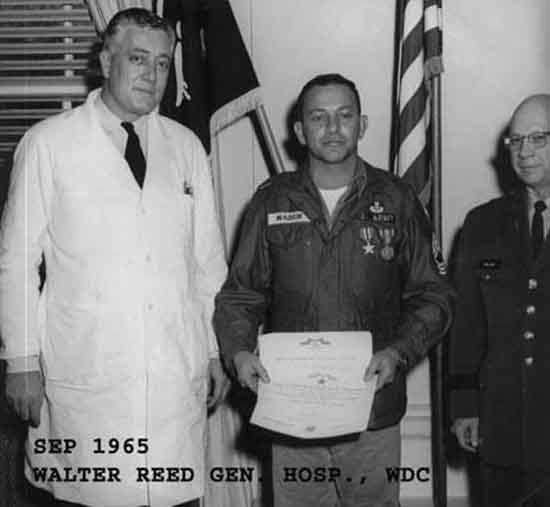
Modern Forces: Paul Bishop: Tell us about SOG?
Billy Waugh: SOG was different, as the missions were virtually un-doable, but did get completed. SOG had the green light to ask for any support it might need. SOG discovered the intricate trails from the North, down Route 922 and other roads, and called in every type of air support to destroy these communication lines. SOG was not so close hauled that a Recon Team Leader (of which Billy was one) on the ground could not make the decision for his Team, concerning continuing or discontinuing an operation. SOG had the backing of highest command and was able to promote its NCOs without delay (in most cases)
Also SOG units were assigned the mission of Rescue; when a USAF, Marine or Army Pilot had been shot down in the combat zones of South Vietnam, Laos or Cambodia, he was normally rescued by the USAF Air Rescue units; however, if the pilot could not be rescued by that fine unit, due to the proximity of the enemy, a “SOG Bright Light Team” (code name of our Rescue Unit) would be inserted to move the Pilot in position for rescue. What an exhilaratingly -wonderful feeling it is to save a US person, or any other friendly man, from certain death or capture by the enemy. Bright Light was a sought-after group of SOG Team Members.

Billy Waugh with Mrs. "A" Billye Alexander 1971
Modern Forces:Jim Hruska: How were the targets selected? Was it a local C & C concept of operation, or did it come from SOG HQ?
Billy Waugh: Targets were selected by MACV/SOG (Military Advisory Group Vietnam/Studies and Observation Group), based on U-2 photos, SIGINT, HUMINT, or a Recon Team (SOG) information. MACV/SOG HQ was located in the city of Saigon, at the US Embassy. Orders flowed directly to the Command and Control Unit 1965-68 called C & C (DaNang, SVN), then through C & C to the FOB's (FOB-1 in Phu Bai, FOB-2 in KomTum, FOB-3 Khe Sanh. These names were changed with DaNang becoming the area for Command and Control North (CCN), which handled I-Corps and the southern portion of North Vietnam, into Laos, up north of the Mu Gia Pass, south to the Kam Duc, SVN area. CCC - Based in Kom Tum, with launch sites in the upper II - Corps areas of SVN, and working the Central portion of Laos down to the tri-border area of SVN, Laos, and Cambodia. CCS - Based in Ban Me Tout, SVN, handling all of Cambodia down to the southern area of Tay Ninh Provice (SVN), but in Cambodia.
Orders came swiftly from MACV to MACV/SOG to the C and C's then to Recon Company of the area to be worked, then without delay to the Recon Team (RT) or Hatchet Forces (HF) that would do the job. No delay. Teams trained constantly.
Modern Forces:Jim Hruska:What was the E & E and/or extraction plan? Was this planned at the joint service level and if so, was this the template for later J-level Special Ops missions?
Billy Waugh: Good questions. Each SOG Launch site had a an E & E Team standing by at the site to be infiltrated in case the RT or HF was split, which was a common occurrence. In many cases we used our own H-34's SOG Choppers, or CH-53's (On call) if necessary. The USAF (7th USAF) was aware of all missions, with their 24/7 Airborne Command Aircraft (Hillsboro /Daylight or Moonbeam/Night). SOG was in with VHF and FM to the Command Aircraft which handled all US Air Force traffic of the US Air War v. North Vietnam, and SOG Operations.
During my 4 years with SOG and the C and C's I am aware of not less than 200 RT and HF emergencies, with countless rescues performed in Laos, Cambodia, and North Vietnam.
Modern Forces:Jim Hruska: Who had overall Command and Control of the mission? Name and rank?
Billy Waugh: mission from several of the available launch sites under the control of either CCS, CCC, or CCN. Assets (Choppers) were provided from the 281st Helicopter Units or others, with SOG Birds H-34's permanently assigned for rescue, or for quickie missions. Op 35 (Ground Mission utilizing 3 US with 3 to 7 Indigenous per Recon Team) was commanded by a COL, with each CC being commanded by an LTC. MAJs were the S-2, and CPTs usually worked at the Launch sites being utilized.
Modern Forces:Jim Hruska: Was COMUS MACV J1 & J3 involved?
Billy Waugh:Not involved in decision- making, as the CO of MACV/SOG was not ordered about by the J3, but missions were handed down by MACV J2 and J3, with priorities suggested to the MACV/SOG CO.
Modern Forces: Paul Bishop:You were heavily involved with SOGs use of HALO as a means of insertion, can you talk us through this?
Billy Waugh: Yes, I was the OIC (actually a SGM) of the combat HALO effort for CCN (Command & Control North). We made lots Practice jumps, out of Long Thanh, SVN - 40 jumps (was the goal), making a lot of jumps helps to cover when the mission actually occurs. In October 1970, my team made a practice Combat Infiltration into NVA owned War Zone “D,” in South Vietnam, for reassembly training etc. This was the first HALO “in a combat zone”. On that effort I broke my right ankle (for the eight or ninth time) and although I was able to complete the mission on the broken ankle. The first actual combat HALO Operation against the Ho Chi Minh trail was lead by SFC Melvin Hill in Nov 1970. I lead the 3rd Combat HALO insertion in June 1971, along the trail. One of my team members (I had 4 US Special Forces men on the 3rd insert) was KIA (SGT Madison Strohlein), but the three other US continued the action, for we had the NVA completely surprised around the area. We HALO’ed in from 19,000 feet, into the jungle, at 0300 in the rain. All perfect for the HALO infiltration.
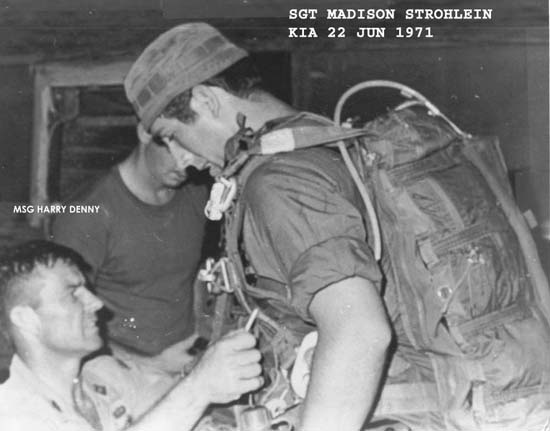
Modern Forces: Paul Bishop: Can you describe the equipment (chutes, weapons and any other items) used in the HALO operations?
Billy Waugh: Our main problem was a decent comms device, HALO drops were in the dark, so we planned with the intention of being separated. Basically a Singleton missions for each member. We also knew we would be dropping into 80 to 100 foot trees so we used a lowering device, It was Type 3 nylon and worn between our backs and the pack tray, it was 180 feet in length. You hooked it around the riser and it allowed you rappel from the trees – this was a standard issue item.
On our practice jump into WarZone D we carried the Metascope, a handheld device infrared device. On our 2nd jump in I Corp area , adjacent to Laos, due to the jungle thickness, the device was ineffective. Commo included a squad radio in the form of the URC-64 pilots radio. We did not carry the PRC 25 Radio, due to its weight. Our weapons were CAR-15s. Equipment choice was dependent on the jumper, up to each soldier to carry what they wanted. These men were all E-6/E-7s so could take what they wished.

Modern Forces: Jim Hruska: What was the tactical objective of the HALO mission? Were there any strategic considerations?
Billy Waugh: HALO missions were conducted to provide absolute secrecy of infiltration locations. Each US person was capable of conducting a singleton-action of calling TACAIR v. the enemy, if separated from the TEAM. Each US person involved had made 20-40 practice HALO inserts, with the US RT members being experienced in combat for (average of) two years.
Modern Forces: jim Hruska: Who jumpmastered? Was it Frank Norbury?
Billy Waugh: No to Frank Norbury, as he was TDY to MACV/SOG. We had very capable HALO J/M's available, right in Recon Company CCN, and used these men.
Modern Forces: Jim Hruska: Where did the air assets come from? Were the pilots mercenary or AF assets?
Billy Waugh: Air assets for regular RT or HF inserts were provided by 1. USMC 2. 281st Aviation Bn 3. 195th Aviation Bn 4. US 7th AF (Rescue) and TAC Air.
Modern Forces: Jim Hruska: Just a personal question: Why did the team carry Uzis? Was it because they were sterile, or was it a size consideration?
Billy Waugh: The Teams out of CCN carried AK-47s or any other weapon that the RT Leader wished the team to carry. RPD, RPK, AK-47, CAR-15, Sniper Weapon for special missions, with a ton of Ammo. Uzi's were seldom used at CCS or CCN; however, Uzi's were not taboo.
Modern Forces: Jim Hruska: Did the team carry uniform items that gave you Geneva Convention protections?
Billy Waugh: Teams wore black uniforms often, and could not have cared less about the Geneva Convention protection. If captured, the Team Member was a dead man, so capture was avoided to the maximum. We did lose a few (US) to capture; however, the NVA were surely aware that the US personnel in the battle area were combatants from SOG Operations, this ID was not necessary or worried about.
Modern Forces: Jim Hruska: Have you ever seen the After Action Reports? Do you have copies of it? Do SFOC courses teach this as an example of clandestine deep insertions?
Billy Waugh: Seen AAR's, certainly. Prepared AAR's, most assuredly; and many of today's training courses follow the examples of the Vietnam SOG Ops, as well as the US Army SF Mike Force Operations.
Modern Forces: Jim Hruska: Do such insertions have a valid place in theatre operations? Would the JSOC/SOCOM perform such missions in support of any future conventional theatre level operations?
Billy Waugh: For your information, such Operations have been and will continue to be utilized in any and all war zones, today and in the future.
Modern Forces: Jim Hruska: How many American SF men inserted by HALO under the MACVSOC auspices? Counting all missions. Do you recall the names.
Billy Waugh: Surely have the names; however, these names are not for public use until the person gives his permission for the use of his name.
Modern Forces: Jim Hruska: In your estimation, what was achieved by the HALO opns in which you participated?
Billy Waugh: Clandestine insertions into the sphere of enemy influence in the jungle trees at night to be introduced to the combat zone secretly and without the knowledge of the enemy for the purpose of Recon, POW Snatch, or to destroy a target area of the enemy. Was a fine mission then, and is a fine mission now.
Modern Forces: Jim Hruska: Since the Army had no in-theatre HALO capabilities, please describe the ad hoc training rec'd at CLT/B53/1970. Was the training sufficient for mission requirements?
Billy Waugh: Sorry my friend, but he US Army did have HALO Capabilities, as the HALO School Instructors were moved from Fort Bragg to Long Thanh, SVN for the training. Training was surely efficient and complete. . Spirit was wonderful, and the lads did the job.
Modern Forces: Jim Hruska: What part did LTC Shungel play in the planning, training and execution phase of this "special project"?
Billy Waugh: Had not been for Dan Shungle, HALO would not have been adapted. Old Dan put his ass on the line for the use of HALO. He died early in life, but this COL did a fine Job. He was a COL and not a LTC.
Modern Forces: Paul Bishop: Can you describe your career post Vietnam, you were involved in the hunt for Carlos the Jackal and Osama Bin Laden that would be of great interest to our readers?
Billy Waugh: With other team members , I searched for Ilych Rameriz Sanchez (a.k.a Carlos The Jackal) for about 4 months in Khartoum in 1993. Another operator and I spotted a bodyguard of The Jackal in Jan 1994, and we were able to identify the vehicle the bodyguard drove. I spotted him and we followed him. On Feb 8th 1994, I was able to photograph Carlos on the street of Khartoum. We found the apartment House Carlos lived in, and with 1 other teams members, placed a 4-month Observation Post 150 meters away from the Apartment. We took, then developed over 2,000 photos of Carlos, his wife, his bodyguards, and all the rats / various personnel who came to visit him. Through our shop in Khartoum, this information was passed to the French DST.
On 13 Aug 1994, Carlos was drugged during minor surgery, bundled up and handed to the French DST. Considering cameras were taboo in Sudan, we did a pretty good job from our clandestine position of the OP, an old abandoned 6-story hospital in Khartoum. Very Clandestine and filthy to the max!

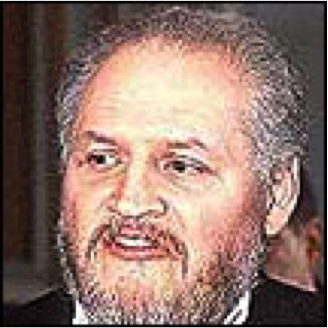
Ramirez-Sanchez, naming himself “Carlos the Jackal” is detainee 872686/X now serving life in the French Prison* * Venezuela’s Hugo Chavez has vowed to buy Carlos out of the French Bastille for a total of $41
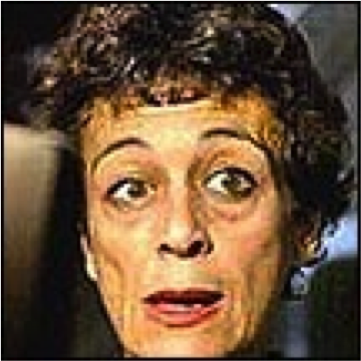
Carlos’ 3rd declared wife Isabella - is a bit beauty deficient; however – her family is very, very rich.
Modern Forces: Paul Bishop:You also undertook a surveillance operation on Osama Bin Laden in Khartoum, can you talk us through this?
Billy Waugh: I clandestinely placed surveillance on Usama Bin Laden for just short of a year, 1992-1993, again, in Khartoum. I manned an OP in the section of Khartoum where Bin Laden had several support sites. I saw Bin Laden each and every day, as he drove into a support site just across the street from my clandestine position. I could have waxed UBL with not one problem. I exchanged remarks with UBLs bodyguards (Afghanis)
I used jogging as a cover, if you imagine the majority of the population of Khartoum are African then I stood out! I used to go jogging between midnight and 4.00 AM every night to keep an eye on him. I always took money and cigarettes to keep out of trouble.
I have also used jogging as cover in Egypt and jogged under the Suez in a US built tunnel and jogged from Europe to Asia over the Bosporus keeping an eye on Soviet submarines.
Modern Forces: Paul Bishop:You assisted with the US led effort in Afghanistan during 2001, can you tell is what drove this?
Billy Waugh: I figured I needed to be there to assist SF in their work just after 9/11 occurred. Loved it all. I made it over there for Operation Enduring freedom in Nov 2001, I tell a bit more detailed version of the mission in my book.
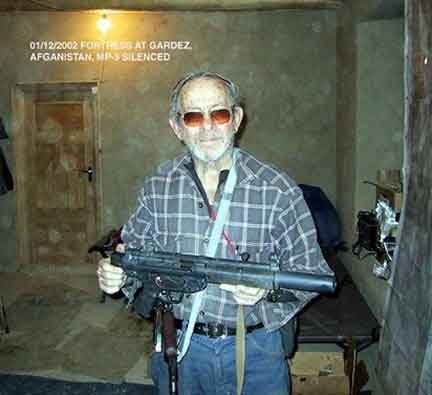
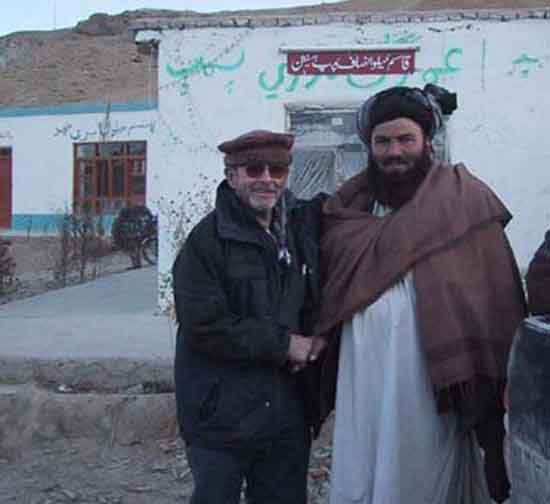
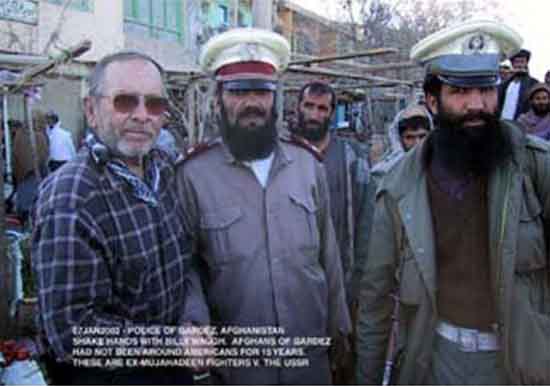
You find Billy’s book, Hunting The Jackal, here. www.amazon.com
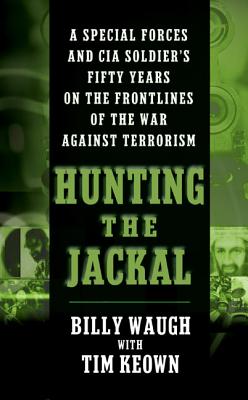
All images copyright Billy Waugh
Other books to read include;
At the Center of the Storm: My Years at the CIA
George Tenent. Billys boss in Sudan.
|

